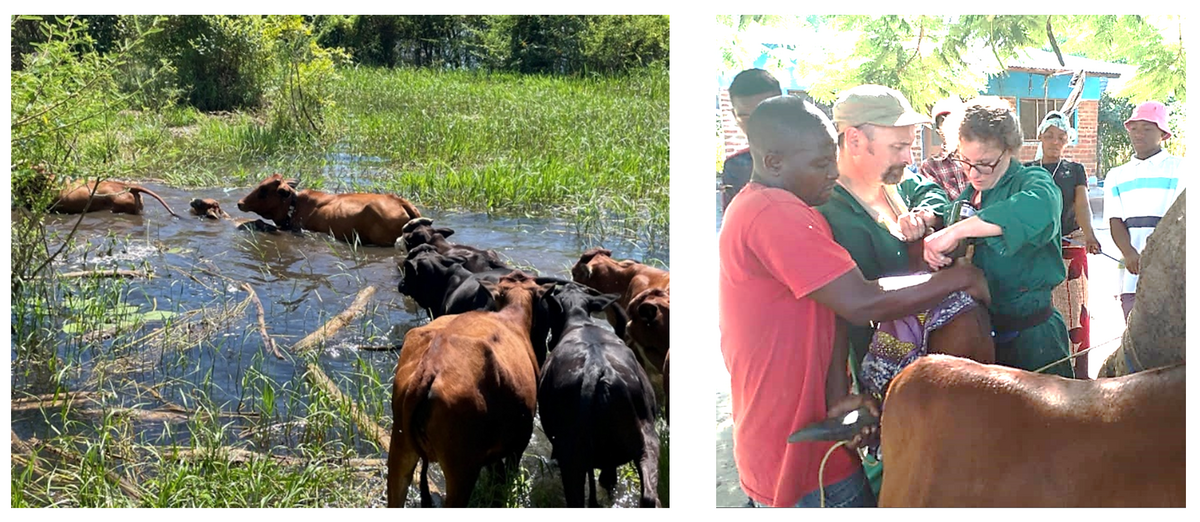Beginning in 2021, our research on the NTD schistosomiasis received a substantive boost from the Wellcome Trust. This was upon receipt of a prestigious Joint Investigator Award to Prof Russell Stothard & Dr Janelisa Musaya.
This project’s acronym is coined ‘HUGS’ - Hybridisation in UroGenital Schistosomiasis. On this World NTD day, we celebrate and share some highlights that have generated deeper insights into the infection biology of hybrid schistosome worms in Malawi. HUGS is also a tacit play on words and a nod to the peculiar lifestyles of schistosomes living in copulation in perpetuo as adult worm pairs. Some of these rarer worm pairings give rise to unexpected hybrid schistosomes which blur traditional species boundaries.
After conducting a pilot epidemiological study across 8 primary schools screening several hundred children, two study communities where schistosome hybrids were present were carefully selected. Here, our attention then firmly focused on tracking unusual schistosome hybrids in local livestock. Last summer we have now proven that Schistosoma mattheei, a previously unknown species in Malawi, is very common in cattle that frequent the shorelines of Lake Malawi and the Lower Shire River. After screening 240 cattle, several animals, calves in particular, have been implicated to carry Schistosoma haematobium-mattheei hybrids. Using a combination of classical parasitological diagnostic methods and state-of-the-art tracking with remote GPS dataloggers, the spatial patterns of bovine schistosomiasis transmission were shown to closely overlap with that of urogenital schistosomiasis.

The discovery of these hybrids schistosomes in cattle helps to reveal the previously cryptic intermixing, or ‘HUGS’, of human and animal schistosomes. This firmly endorses our OneHealth approach to further explore the interface of human and animal health. GPS tracking cattle movements throughout the year has revealed, for example, that during dryer months, inland cattle grazing is exhausted. This then forces cattle to scavenge feed upon emergent aquatic vegetation within the lake. This then brings cattle schistosomes ever closer to human ones. Before these observations, few public health practitioners could have imagined swimming cattle, yet this is exactly what we have documented quantitatively and qualitatively. With this increasing water contact, cattle contaminate the aquatic shoreline, infecting freshwater snails which in turn infect people that make direct use of lake water.
Furthermore, we have convincingly shown the cattle can be successfully treated with the anthelminthic praziquantel. However, they quickly become re-infected within three months, needing re-treatment up to four times a year. This establishes the stubborn and chronic nature of bovine schistosome transmission within the lake. New strategies to control infections in livestock need to be developed, and quickly, if broader ambitions of disease control can be realised. Our first steps help pave the way for more targeted epidemiological research still to be developed. For example, after screening 2,400 people, we have now established two longitudinal community cohorts for follow-ups in coming years. At baseline, we have firmly demonstrated schistosomiasis in pre-school-aged children, exceeding 25%, which necessitates the quick deployment of the forthcoming paediatric formulation of praziquantel. Yet, do such infected pre-school-aged children disproportionally harbour hybrid schistosome worms?
As we look forward to a future free from schistosomiasis, our teams wish to acknowledge last year’s loss of our dear colleague Mr Lazarus Juziwelo, the Malawi national control programme manager for schistosomiasis. It is in honour of Lazarus’ memory that inspires us to work hard and curtail this disease in his country and across sub-Saharan Africa.